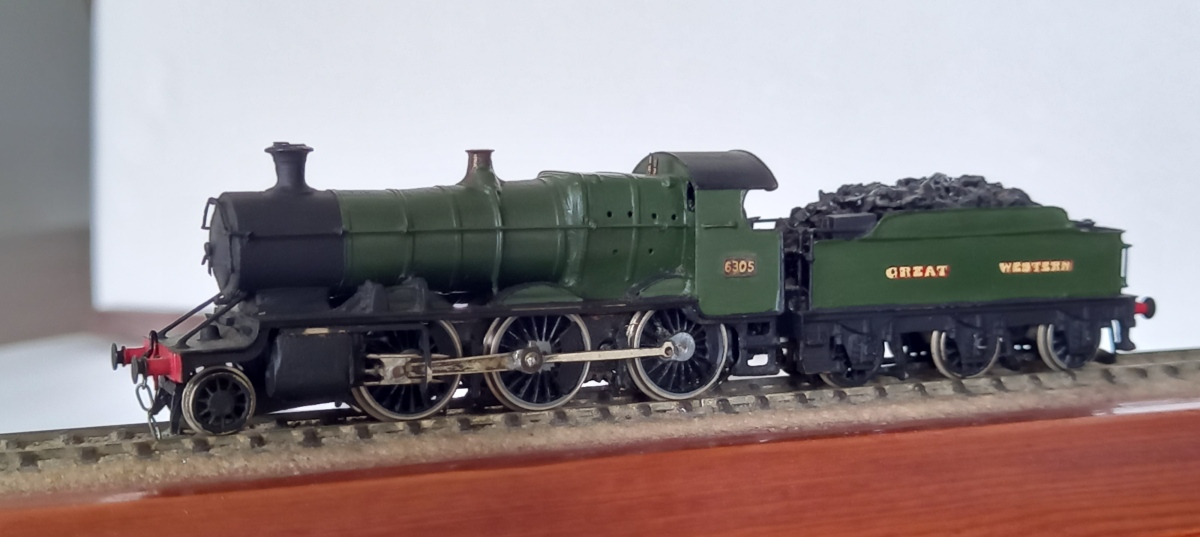I have always had a soft spot for the Churchward 2-6-0 Moguls so my third 2mm finescale loco scratch-building project was 6305 (I built it in 1984). The 63xx’s were initially paired with 2500-gallon tenders and later 3000-gallon versions. I built the smaller tender as part of this project, but with the intention of swapping it for the larger version which I had originally built for the Dean Goods (Another world of modelling, September 30, 2021). The difference in finish between the loco and the tender highlights the evolution in my modelling, between the first and this loco. Nonetheless, the two locos are paired with their appropriately sized tenders for posterity.
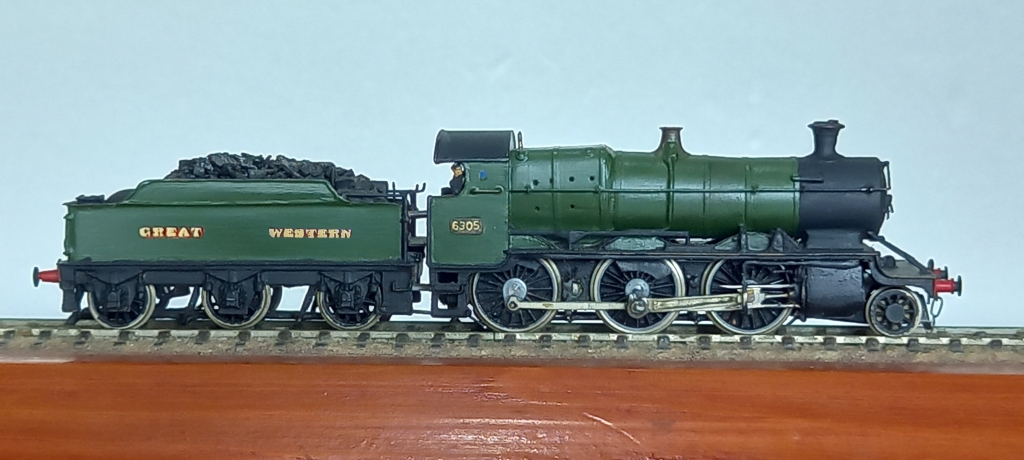
Both the loco and the tender have split-frame chassis so that power is collected through all wheels. Phosphor-bronze wires, soldered to the pony truck frames, rub against the underside of a PCB chassis spacer to act as both current collectors and springs. The scratchbuilt gearbox limits maximum speed to a scale 80mph. Idler gears drive the three coupled axles, thus providing good pulling power – 10 coaches or fifty four-wheel goods wagons. The motor fits within the tender and is connected to the gearbox via a driveshaft and universal couplings. Real coal is used to conceal the motor. Wheels, gears and motor were purchased from the 2mm Scale Association shop.
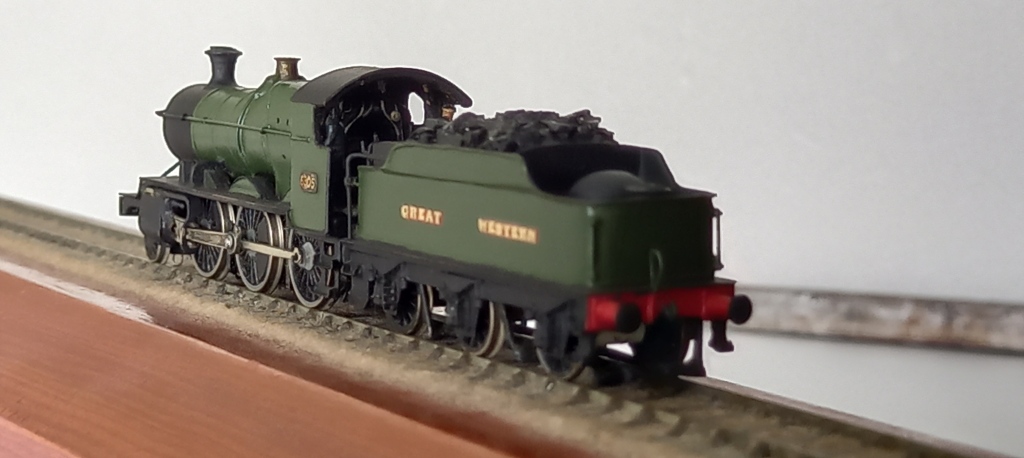
I think this view highlights the elegance of the class. Churchward’s locos tended to be visually appealing, with clean lines, as well as being strong and reliable runners.
The platework is .010″or .015″ brass sheet. The tapered boiler and smokebox are .010″ brass rolled to the appropriate diameter and soldered along the seams. The boiler and smokebox are filled with lead. The Belpaire firebox, folded to shape and soldered to .030″ nickel-silver front and back plates, sits over the scratch-built gearbox. The loco and tender footplates are fabricated from .005″ and .020″ nickel-silver sheet. The slightly wider, .005″ sheet is soldered atop the .020″ sheet to produce the characteristic GWR footplate.
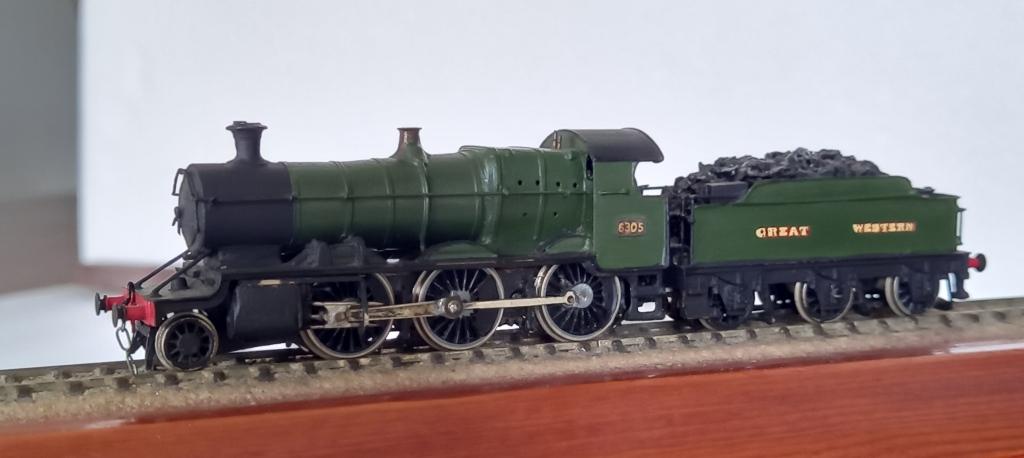
I turned the chimney, safety valve bonnet, buffers and other fittings using a mini-drill and files. The coupling rods are etched nickel-silver. The connecting rods were fettled from nickel-silver sheet. The pistons are a solid block of tufnol, filed to profile, and glued to the chassis frames. The pony truck pivots on a 16BA screw in the base of the piston block.
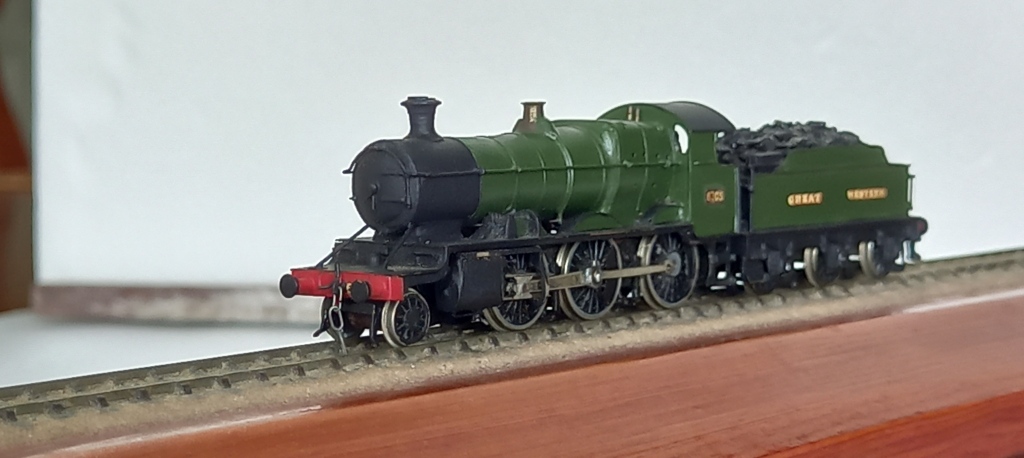
The boiler/smokebox handrail is one piece of copper wire bent to shape and held in place with knobs of twisted wire. The boiler bands are hand-cut strips of ‘magic’ tape. The brake blocks and rodding were fabricated from nickel-silver sheet and strip respectively. The loco is a good runner and always looked the part on long trains and long runs.

